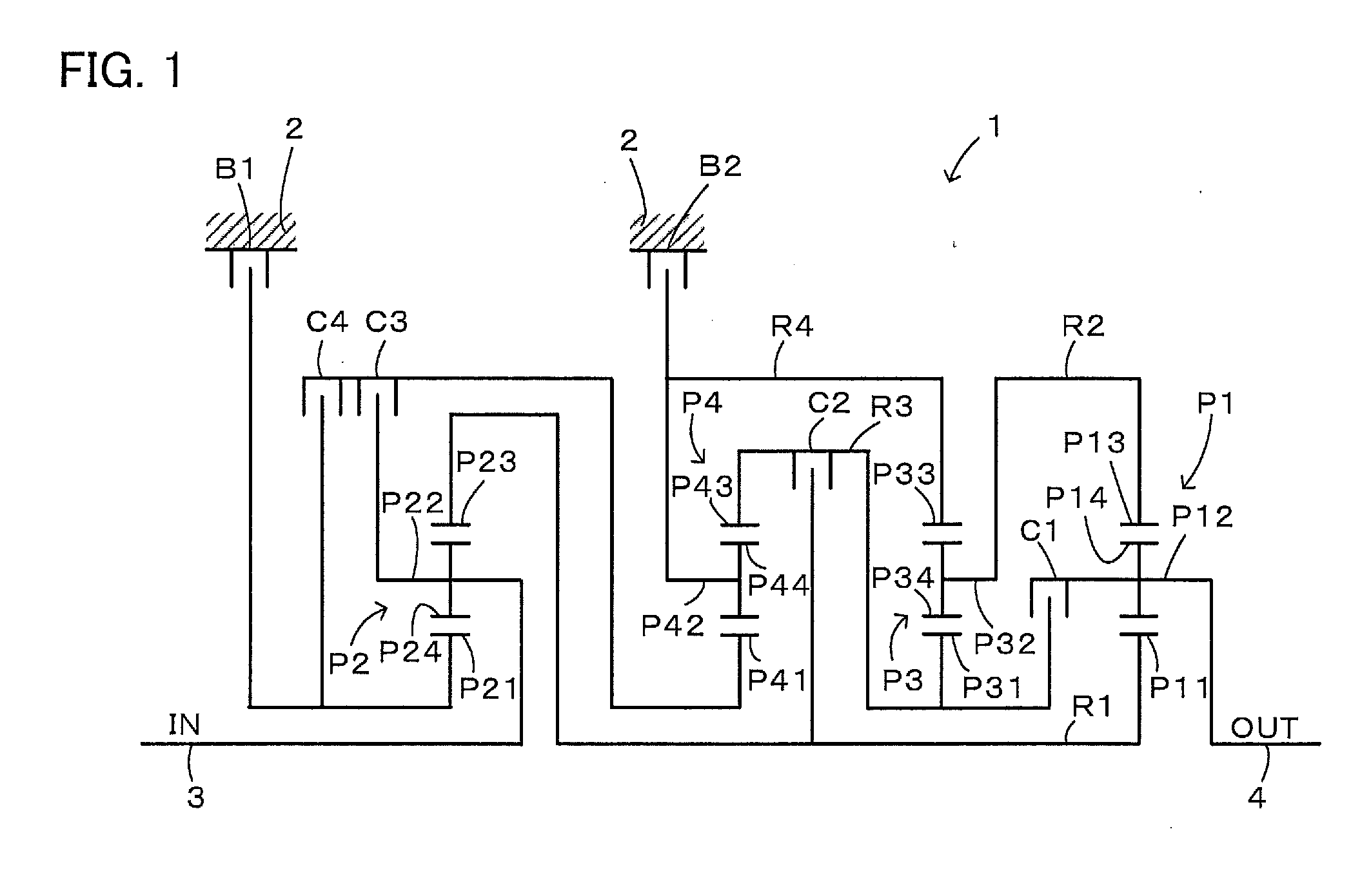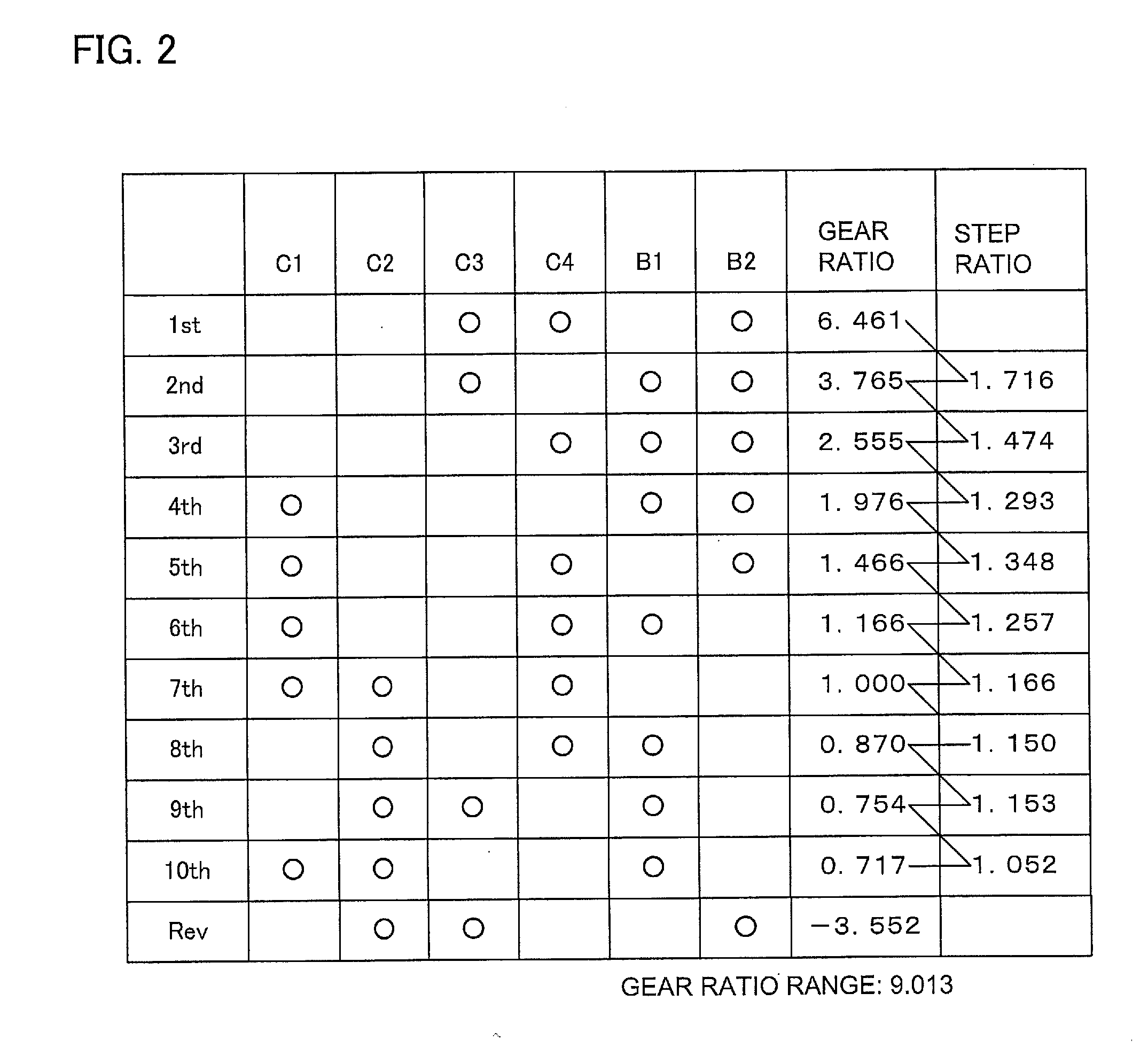Automatic transmission apparatus
a transmission apparatus and automatic technology, applied in mechanical devices, transportation and packaging, gear shifting, etc., can solve the problems of reducing the transmission efficiency of power, affecting the smooth shift feel around the time, and increasing the loss of meshing gears, so as to improve the acceleration performance, fuel economy, and fuel economy.
- Summary
- Abstract
- Description
- Claims
- Application Information
AI Technical Summary
Benefits of technology
Problems solved by technology
Method used
Image
Examples
embodiment
[0048]FIG. 1 is a structural diagram showing an outline of an automatic transmission apparatus 1 as an embodiment of the present invention. The automatic transmission apparatus 1 of the embodiment includes four single-pinion type planetary gear mechanisms P1, P2, P3, and P4, four clutches C1, C2, C3, and C4, and two brakes B1 and B2, and is mounted on a vehicle of a type (such as a front-engine rear-drive type) in which an engine as an internal combustion engine (not shown) is longitudinally arranged (in the front-rear direction of the vehicle). The automatic transmission apparatus 1 is structured as a stepped speed change mechanism that receives power from the engine via a starting device, such as a torque converter (not shown) from an input shaft 3, and also shifts the received power to be output to an output gear 4. The power output to the output shaft 4 is output to right and left driving wheels via a gear mechanism and a differential gear (not shown). In the automatic transmiss...
PUM
 Login to View More
Login to View More Abstract
Description
Claims
Application Information
 Login to View More
Login to View More - R&D
- Intellectual Property
- Life Sciences
- Materials
- Tech Scout
- Unparalleled Data Quality
- Higher Quality Content
- 60% Fewer Hallucinations
Browse by: Latest US Patents, China's latest patents, Technical Efficacy Thesaurus, Application Domain, Technology Topic, Popular Technical Reports.
© 2025 PatSnap. All rights reserved.Legal|Privacy policy|Modern Slavery Act Transparency Statement|Sitemap|About US| Contact US: help@patsnap.com



